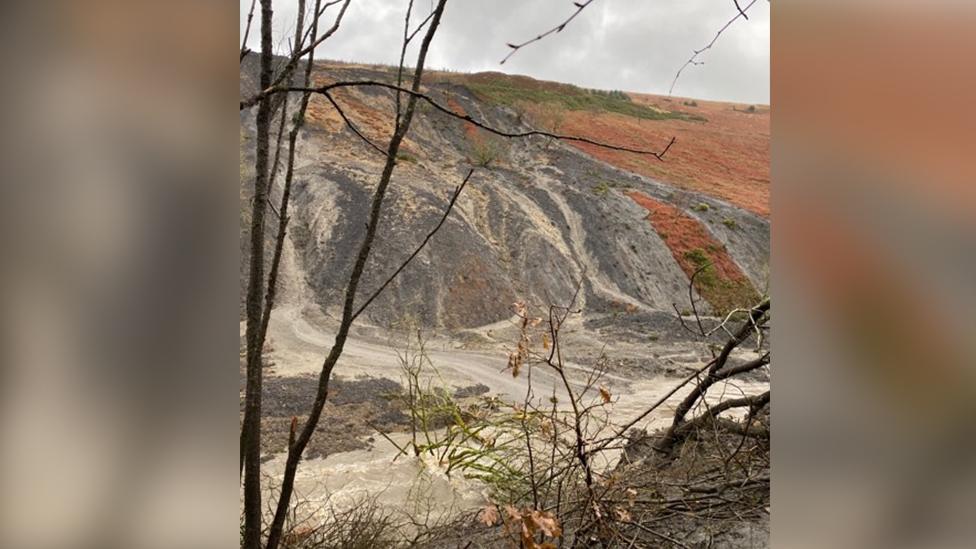Bethesda landslip: 120 years since 'narrow escape' in 1900
- Published
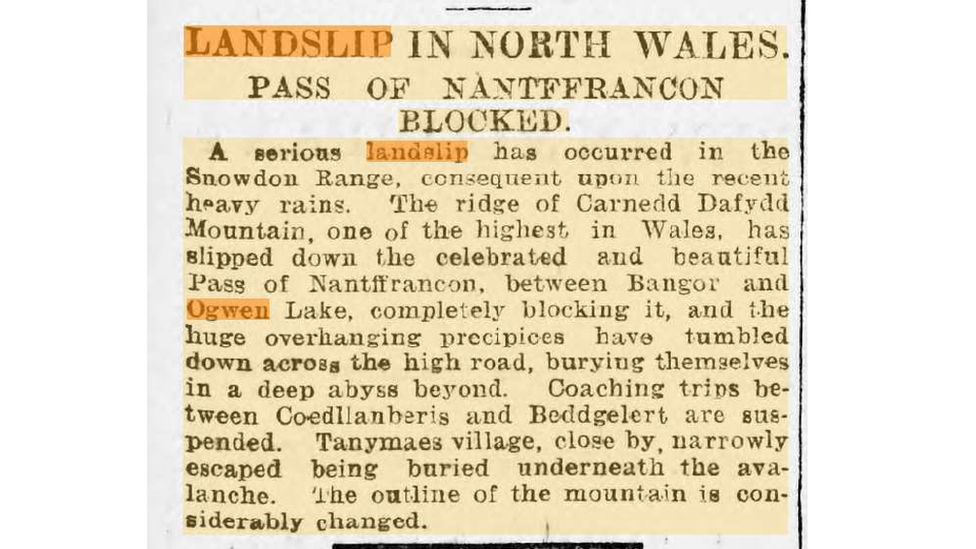
"Landslip in North Wales. Pass of Nantffrancon blocked."
It could have been a headline following Storm Francis last month, but in fact it came from the Evening Express of 8 August 1900.
It's 120 years since the A5 near Bethesda suffered the worst in a history of landslides along its route.
Heavy rain drove hundreds of tonnes of mud and rock from Carnedd Dafydd down the Nant Ffrancon Pass, between Bangor and Ogwen Lake, with villagers below narrowly escaping disaster.
Boulders weighing up to six tonnes narrowly missed about 60 residents in the village of Tyn y Maes, and miraculously no-one was hurt.
Reports claimed debris had even reached the River Ogwen some half-a-mile (0.8km) away.
As with Storm Francis in 2020, and an earlier 1879 incident, the landslide came amid unusually inclement August weather.
However, Dr Hazel Pierce of Bangor University explains that - unlike this year's landslides - the 1900 near-disaster had an unseen cause.
"After the landslide a Mr Evans, surveyor for Caernarfonshire County Council, was sent out to assess the damage, and confirmed that it was even worse than at first thought," she said.
"In his opinion, owing to the heavy rain, the rising water table had caused a 'waterspout' to burst on the slopes of Carnedd Dafydd, leading to water building up behind rocks, until this 'barrier' finally gave way and the mass of water coursed down the slope 'carrying everything before it'."
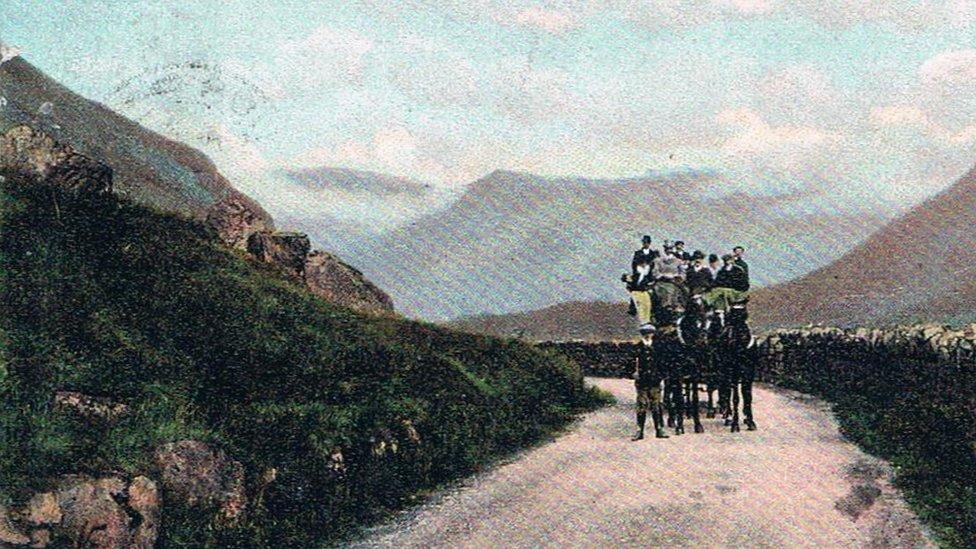
A coach and horse coming along the A5 towards Bethesda
The landslip was so immense it was said that the outline of Carnedd Dafydd was "considerably changed" afterwards.
Although no lives were lost - then as now - plenty of livelihoods were affected.
"In 2020, the people of Bethesda were relying on a good summer season to help rescue the economy after coronavirus, whereas in 1900 they needed tourism to help bolster their incomes as times grew harder in the slate quarries," said Dr Pierce, from the university's Stephen Colclough Centre for the History and Culture of the Book
"In 1900, tourism was no longer purely the preserve of the Victorian wealthy, and the area was benefiting from an increase of 'ordinary' visitors.
"But with the A5 closed for a considerable time after the landslide, this lifeline was cut off from them."
She added: "Nant Ffrancon Pass was a popular tourist route for omnibus trips from Bethesda to Llyn Ogwen and Capel Curig; even some Bethesda publicans made extra money by taking visitors on excursions up the valley, so the loss of these trips would have been a blow."
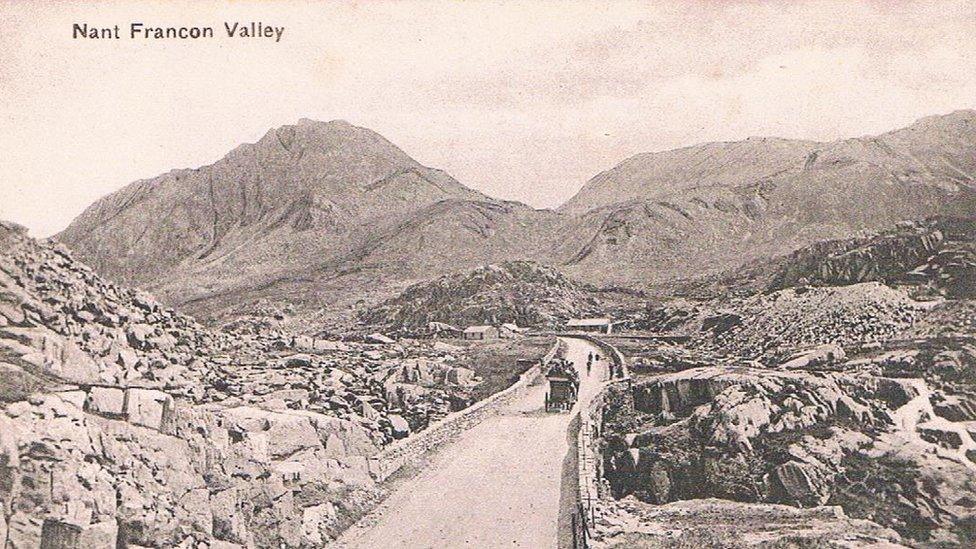
A postcard from 1900-1910 shows a coach and horses at the top of the valley crossing Pont Pen y Benglog and approaching Llyn Ogwen
The 1901 census shows the scale of the disaster which was so narrowly avoided.
50 people lived in 15 properties in Tyn y Maes, as well as a varying number of hands at nearby Tyn y Maes Farm.
The majority of the inhabitants were quarrymen who worked at Penrhyn Slate Quarry, and they were among the 200 or more who came to clear the road, quite possibly in their own time without pay.
Just three months later these quarrymen would face a different kind of storm as they walked out in protest at working conditions, in a three-year strike, which became one of the longest in British history.
"As with the mountain rescues of the time, quarrymen often gave up their Saturday afternoons, or took unpaid leave, to search for those lost on the hill and help others in trouble," Dr Pierce said.
"Along with other locals, they were the forerunners of today's mountain rescue team volunteers.
"When the side of the mountain collapsed in 1900, they came forward to help move by hand rocks which, after another fall in 1954, only explosives could shift.
"Without their efforts the quarry would have been affected too, so to have their sacrifices thrown back at them so soon afterwards must have felt like a massive slap in the face."
To commemorate the start of the Great Strike/Y Streic Fawr in November 1900, Dr Pierce has created a number of virtual tours for the History Points' website, external.
- Published29 October 2018

- Published25 February 2020
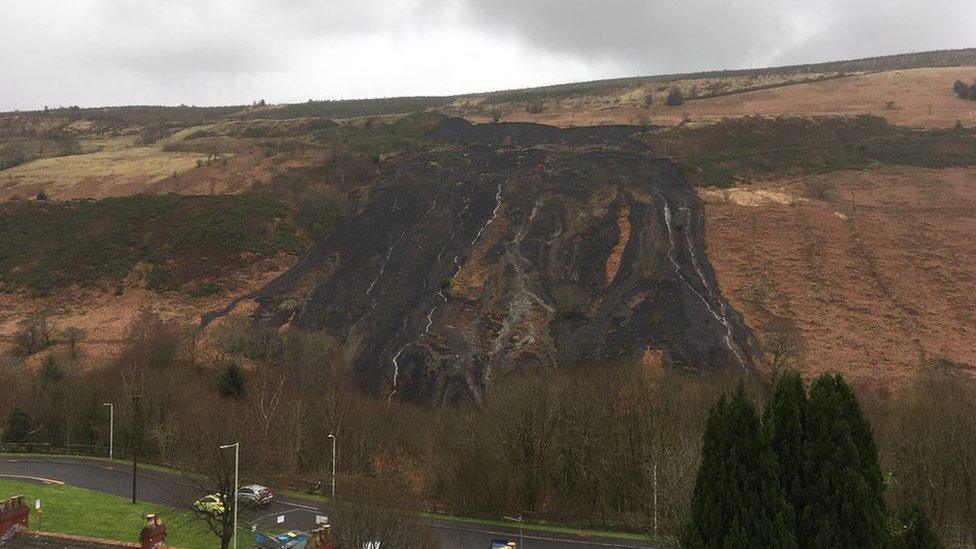
- Published18 February 2020

- Published16 February 2020
